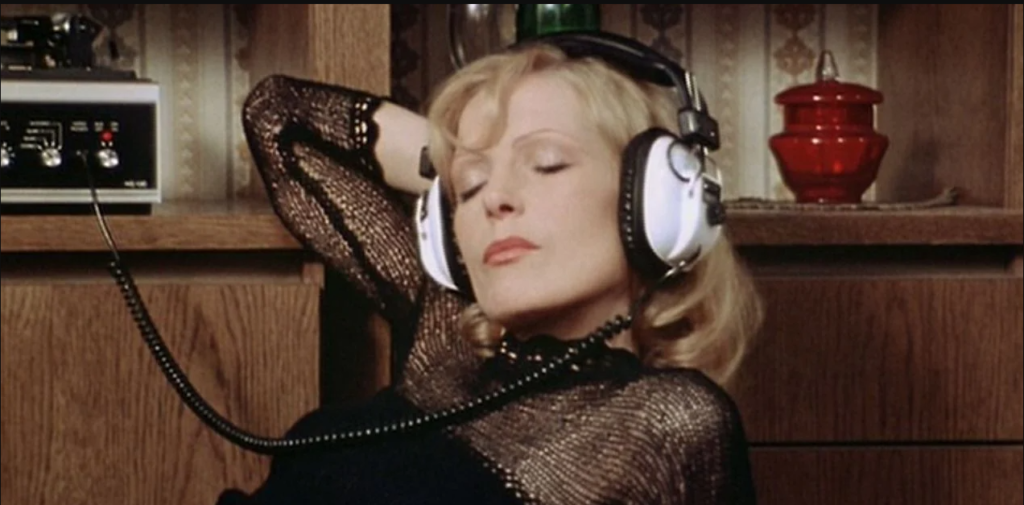
The discomfiture I felt upon starting to watch Fear of Fear, my first exposure to the work of Rainer Werner Fassbinder, had less to do with the painful plight of its protagonist, the beautiful, chameleon-like Margot, played by Margit Carstensen, and more to do with the film-making itself, which immediately places one in a strange universe that feels at odds with many of the usual conventions of movie-making.
There is a spareness to Fassbinder’s work here which I struggled not to dismiss as evidence of amateurishness. In his October 15, 1976 New York Times review of the film, Vincent Canby remarked that “compared to a full-scale portraitist like Bernardo Bertolucci, [Fassbinder] is a sketch artist, but the sketches are singular.”
There are certainly the strong lines of a skillful sketch artist in the film, but also what feel like less masterly strokes, as in the techniques that appear as unimaginative defaults: a repetitive and ominous sound track, along with a swirling visual distortion that seems intended to denote Margot’s periods of mental disturbance; the tendency to resort to a rapid zoom close-up as a kind of exclamation mark, emphasizing an emotional moment or climax; and fade-out/fade-in transitions between scenes that feels dated and off-putting, periodically distancing us from the flow of the film.
Fassbinder’s “sketch” technique gives us a film in which very little does not contribute to the exploration of Margot’s mercurial mental condition, the film’s plot, if it can be said to have one. This minimalism results in claustrophobic settings — few scenes take place outside the depressing apartment she shares with her husband Kurt (Ulrich Faulhaber), and her two children, and fewer still occur outside the scope of the encompassing city block, which contains (in the same apartment building) Margot’s interfering in-laws and, next door, the office of Mr. Bauer (Kurt Raab), a somehow generic “doctor,” of handsome visage and reassuring manner, Margot’s sometime lover.
In deciding whether the film’s tight and unrelenting focus is a positive or a negative, one must perhaps understand what it is that Fassbinder is seeking to create. Certainly the claustrophobia mimics Margot’s feelings of being locked inside the roles of mother, wife, closely-watched in-law.
Too, Fear of Fear seems somehow more a work of ideas than of events. Certainly the film’s limited scope and cinematographic carelessness, combined with the intensity of mood in tandem with the indeterminate nature of Margot’s problem suggests an existential crisis, one which is perhaps resistant to film realism, and which is best shown as Fassbinder chooses to.
Further, her problem is never clearly identified by any medical professional (one specialist says she is a schizophrenic, another says she is definitely not). These specialists share only a belief in drugs as the remedy for Margot’s condition. The fact that the diagnoses are so mixed seems a sly suggestion that no physical malady can adequately encapsulate what it is that ails her.
And, as with the diagnoses, so with the result does Fassbinder seem to show a cynical detachment and an unwillingness to achieve a neat resolution. At the behest of one specialist who suggests that Margot find meaning in work, and is delighted to find that she has a “skill” (she can type), the patient is dutifully tapping away on a typewriter when her brother-in-law, aware of her intimate relations with Mr. Bauer, attempts to show sensitivity in alerting her, before the news becomes public, that the doctor has just committed suicide by hanging himself.
Margot takes the news in stride, insisting that she is “so calm, perfectly calm,” barely looking up from the keyboard. But, Fassbinder seems to suggest, the only progress she has made is in more successfully anesthetizing herself. In this German world of work, square corners and hard edges, someone like Margot can never be anything but not calm.